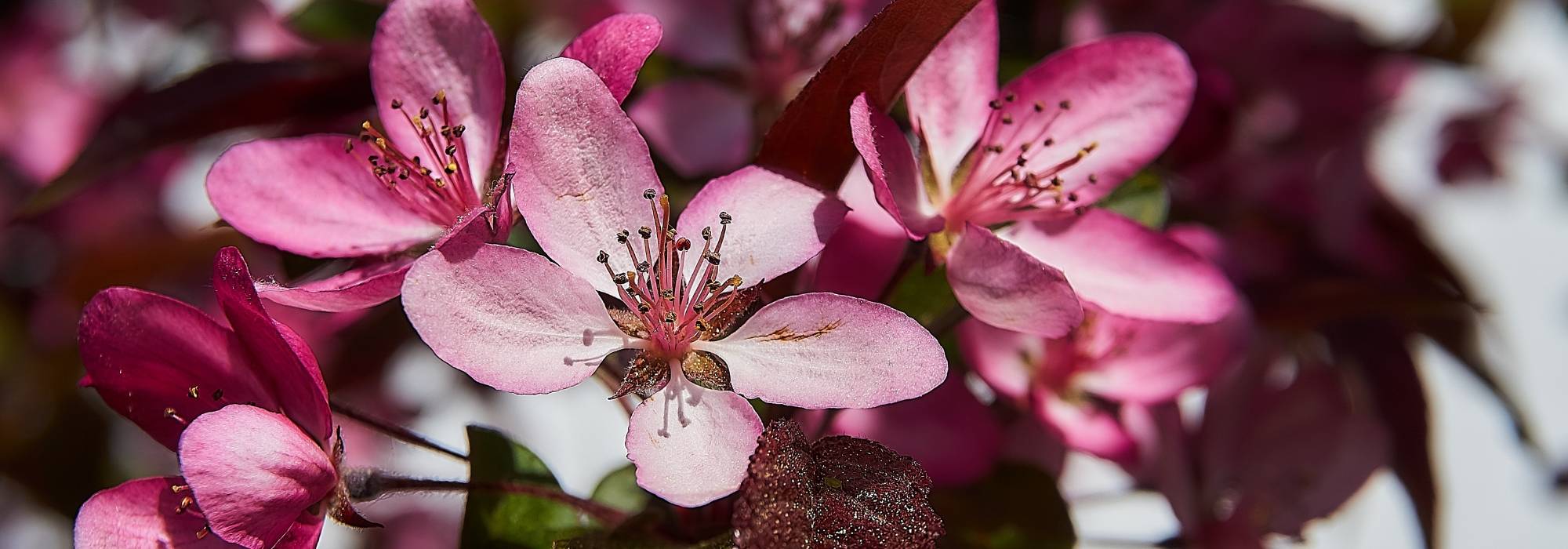
Flowering and ornamental apple trees: planting, pruning, care
Contents
Ornamental apple trees in a nutshell
- Ornamental apple tree produces ornamental flowering in spring and aids pollination of other apple trees
- Its colourful fruits, decorative in autumn, provide food for birds before and during winter
- Small tree or large bush, ideal for small gardens because of compact size
- With relatively rapid growth, flowering apple trees are hardy and easy to grow
A word from our expert
Close relatives of cultivated apple trees, ornamental apple trees or flowering apple trees, or even “pommetiers” as they are nicknamed in Quebec, are deciduous bushes of family Rosaceae.
They are mainly cultivated for ornamental purposes, for their splendid spring flowering ranging from white to red via pink, but also for their decorative fruits in autumn whose colour varies from yellow to bright red depending on variety. Foliage, green in season, takes truly remarkable autumn colours.
Ornamental apple trees are ideal in small gardens because of their reduced size and compact, rounded habit. Moreover, they are undemanding regarding soil type and grow quickly provided planted in sun in cool, fertile soil.
There are about sixty species and hybrids of genus Malus found across the entire Northern Hemisphere.
Ornamental apple trees are useful for pollination of other apple trees and represent a genuine natural resource for wildlife by providing food for insects, birds and some mammals. Moreover, rest assured: their small apples are not poisonous and can even be eaten as jelly, compote, juice, alcoholic drinks or cider!
Description and botany
Botanical data
- Latin name Malus sp.
- Family Rosaceae
- Common name Flowering apple or Ornamental apple
- Flowering May
- Height 5 m
- Exposure sun or partial shade
- Soil type loose, rich and moist
- Hardiness -15°C
Apple trees are bushes or small trees that belong to genus Malus in family Rosaceae and grow across Northern Hemisphere. There are 62 natural or hybrid species worldwide and 20,000 varieties. Most famous species, Malus domestica, is cultivated for its fruit: apples. Others are mainly grown as pollinisers or, more rarely, for their wood, or as ornamental bushes: Malus sieboldii, Malus floribunda, Malus sargentii, Malus trilobata, Malus orientalis, Malus angustifolia, Malus yunnanensis, Malus spectabilis, … to name but a few.
In France, Switzerland and Belgium one can still encounter a wild apple called Malus sylvestris, once thought to be ancestor of Malus domestica. In fact this is not the case: ancestor of fruit apples comes from forests of Kazakhstan on Chinese border and is called Malus sieversii. But wild or crab apple is an excellent floriferous and hardy apple in a natural garden. It is also sometimes used as rootstock for fruit or ornamental apple trees.
All species in genus Malus are small trees or bushes with deciduous foliage, some display attractive colours in autumn: yellow, orange, red. From first days of spring flower buds take colours ranging from deep pink to carmine. Flowers, white, pink or red, appear in May and are grouped in umbels. Flowering is fairly short, a few weeks, but lasts longer than that of Prunus. Simple flower has 5 free petals, as with all plants in family Rosaceae (rose, pear, amelanchier, hawthorn, blackthorn, ..) but there are also varieties with semi-double or double flowers.
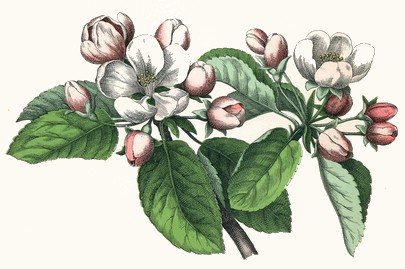
Flowers of Malus domestica – botanical illustration
Apple trees are not self-fertile. They absolutely need other apple trees of a different variety within about 100 metres to fruit: this is called cross fertilization. That is why it is always recommended to plant several apple trees at home (unless neighbours have already done so!) to enjoy apples. This also applies to ornamental apple trees. Also remember these bushes need wild or domestic bees to be able to fruit.
Small apples, red, orange or yellow, of ornamental apple trees appear from late August and remain on the bush until February unless you or birds decide otherwise… (see recipe at end of article). Apples formed after pollination of the flowers are not true fruits but pseudocarps. In fact, the part containing the pips is the true fruit (the core if you prefer). The rest, what we eat of the apple, is only the development of the floral receptacle at the same time as development of the true fruit. The apple thus formed is called a piridion: the combination of a fleshy fruit and a fleshy receptacle. Pseudocarps are very common among Rosaceae (rosehips, pears, strawberries, quince, …).
Apple trees are sun-loving plants, so do not plant them under dense canopy, but they are also mesophilous, meaning they prefer a temperate and fairly humid climate. An apple tree will therefore struggle to grow in southern France. Moreover, apple tree needs a winter dormancy period; do not try to plant it in the tropics.

Flowering development of Malus ‘Evereste’
Some much-loved varieties
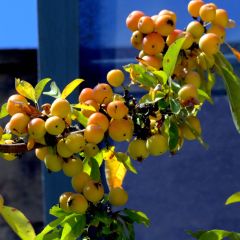
Malus zumi Golden Hornet - Crab Apple
- Flowering time May, June
- Height at maturity 4 m
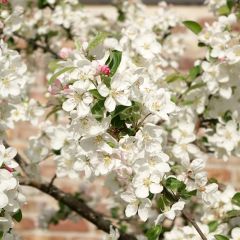
Malus Evereste - Crab Apple
- Flowering time May, June
- Height at maturity 5 m
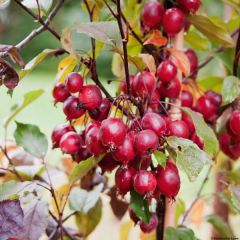
Malus Red Obelisk - Crab Apple
- Flowering time May, June
- Height at maturity 4 m
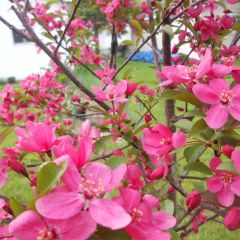
Malus Prairiefire - Crab Apple
- Flowering time May, June
- Height at maturity 6 m
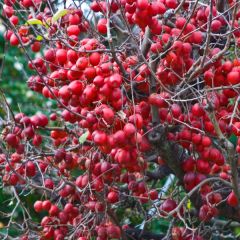
Malus Red Sentinel - Crab Apple
- Flowering time May, June
- Height at maturity 4 m
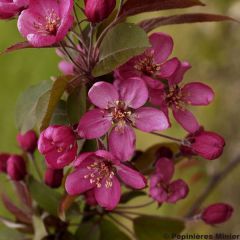
Malus Coccinella Courtarou - Crab Apple
- Flowering time May, June
- Height at maturity 4 m
Discover other Malus - Crabapple
View all →Available in 2 sizes
Available in 1 sizes
Available in 1 sizes
Available in 3 sizes
Available in 2 sizes
Available in 1 sizes
Available in 2 sizes
Available in 1 sizes
Available in 1 sizes
Available in 4 sizes
Planting an ornamental apple tree
Exposure and soil
Plant your apple tree in full sun or, if necessary, in partial shade. Keep it away from large trees that might compete for water and light.
Plant it in heavy, rich and cool, even clayey soil : it is one of the bushes that most appreciates this type of soil. Otherwise, it is completely indifferent to soil pH but remember it does not like drought at all.
Protect it from prevailing winds that could disrupt formation of flower buds.
please note : apple trees are not self-fertile. This means that to set fruit, they need pollen from another apple tree planted nearby. Otherwise, you will only have flowers. Do not worry, however, if a Malus of any kind grows within a radius of one hundred metres of yours, it will be able to produce fruit. If you really have no apple trees around you, plant two different varieties.
Planting period
“On St Catherine’s Day, all wood takes root“, this old proverb still applies provided certain precautions are taken: do not plant when soil is frozen or waterlogged. In any case, favour planting in late November–early December or, alternatively, in spring during March and April.
Planting
Planting a flowering apple tree in containers :
- Dig a planting hole twice the size of the root ball. If your soil is poor, you can add some well-rotted compost.
- Soak the pot of your bush in water for two hours.
- Remove your apple tree from its pot and gently loosen the roots by hand, breaking up part of the root ball. You can cut back any damaged roots with pruning shears to make clean cuts.
- Place your bush at the bottom of the hole and hold it. Spread the roots out well.
- Backfill the hole with the previously excavated soil. Firm down slightly.
- Water your bush with a 10 L watering can to reduce air pockets around the roots.
- Place a mulch of dead leaves at the base to retain moisture.
Planting a flowering apple tree with bare roots :
- Dig a planting hole twice the size of the root ball. If your soil is poor, you can add some well-rotted compost.
- Check roots and cut away any damaged parts if you see any.
- Prepare a pralin made of well-rotted manure, a little soil and water and dip your apple tree’s roots into it. This is called pralinising. This technique will help the roots get off to a good start.
- Place your bush at the bottom of the hole and hold it. Spread the roots out well.
- Backfill the hole with the previously excavated soil. Firm down slightly.
- Water your bush with a 10 L watering can to reduce air pockets around the roots.
- Place a mulch of dead leaves at the base to retain moisture.
To learn more about planting trees and bushes with bare roots, we offer this video : plant a bare-root tree
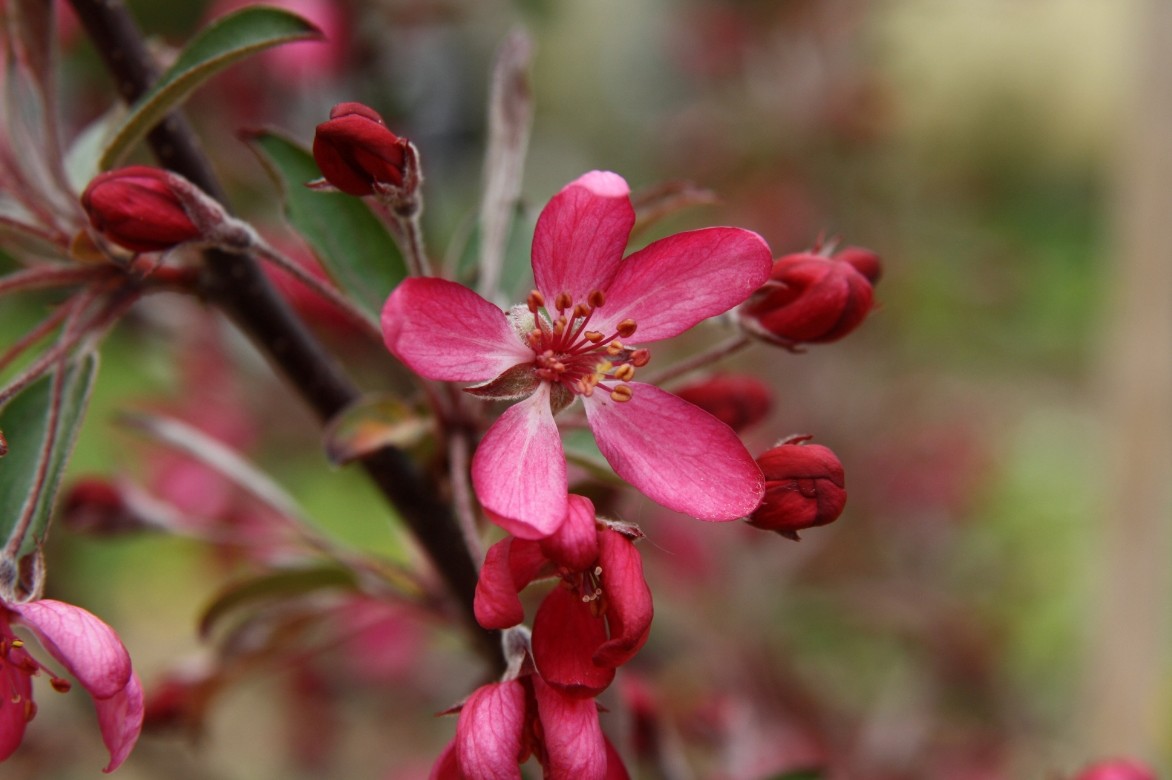
Malus ‘Diable Rouge’
Multiplication
By sowing
Sowing pips is always possible in spring after winter stratification or a few days in the freezer. But apple tree produced this way will not be same variety as tree from which seeds come. However it can serve as rootstock as seedling apple… (see below).
By cuttings
Forget cuttings for ornamental apple trees. Results are fairly poor and apple trees formed this way seem quite fragile, notably in susceptibility to woolly aphid which attack roots.
By grafting with a shield or shield-grafting
To do this, you will need to take out your nice grafting knife received at Christmas, take a scion from a seedling apple (Malus sylvestris for example) and embark on a shield graft to obtain desired variety or cultivar. Grafting is less complicated than it first appears and I can only advise you to take the plunge.
Grafting is done on a “dormant eye”, that is between July and October (editor’s note: grafts on a “growing eye” are done in spring at sap rise, mainly for citrus trees). Simply make a T-shaped slit in bark of rootstock then gently lift bark to create an opening to insert scion. Scion, taken from variety to be multiplied, is prepared by cutting with a sharp pruning knife or a razor blade an “eye”, that is a dormant bud on a branch. It is then just a question of inserting this eye into T-slit of rootstock.
Take care to place graft-shield in correct orientation, bud pointing upwards, and to press it firmly onto exposed part of rootstock. You can then bind everything, taking care not to cover the eye (tie below it and above it). Some use raffia and I’ve even seen someone use adhesive tape (true!), personally I prefer small clothes pegs placed below and above the eye. Graft will breathe better and you can easily check that everything is going well as graft takes.
Subsequently scion will grow to about twenty centimetres, sign that it has taken. You will then only need to cut rootstock above scion.
Please note : you can do all this in a pot and in that case it should be placed sheltered from wind and in partial shade. But you can just as well graft in situ, that is directly at location of your future ornamental apple tree.
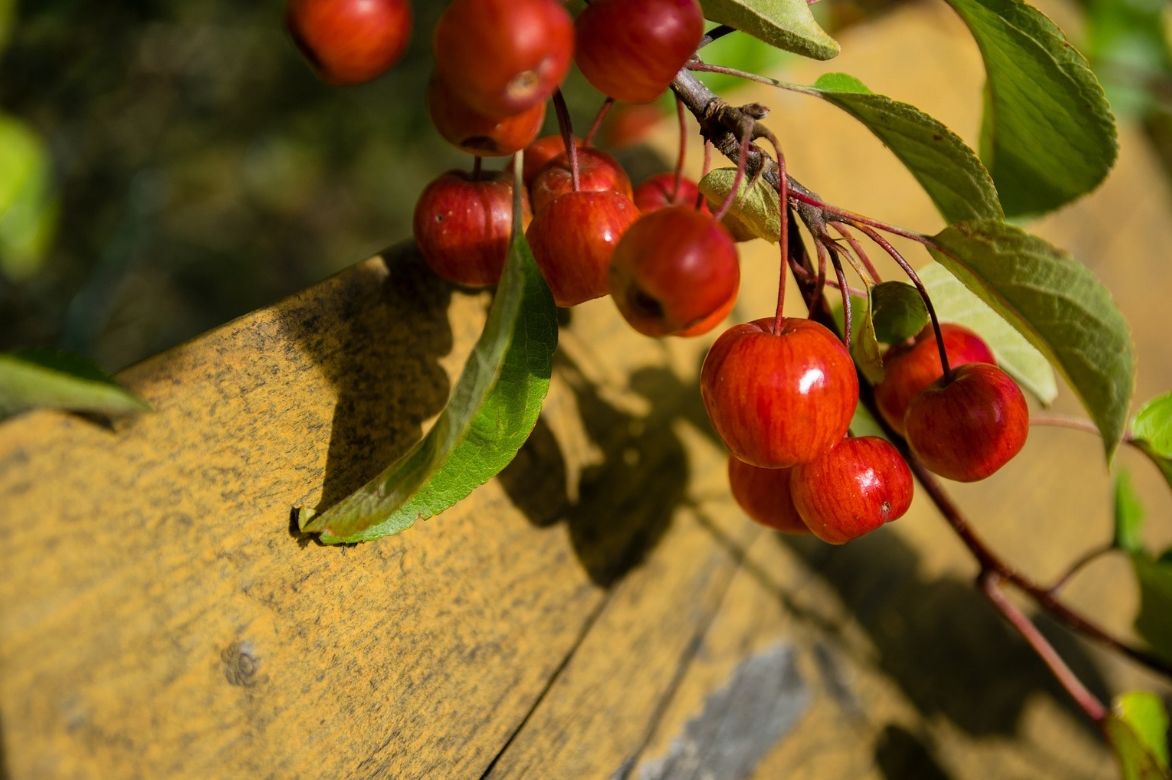
Maintenance, pruning and care of flowering apple trees
Pruning
Maintenance pruning is unnecessary.
At most, you can carry out a light prune at the end of winter (February–March) simply to harmonise the outline and remove any dead wood. However, do not shorten main branches, as this would spoil the shape of your bush.
Diseases and pests
Ornamental apple trees are far less susceptible than their fruit-producing cousins, especially if you have provided ideal soil and situation and put away your pruning shear in the cellar. Nevertheless, some minor issues can appear, although they are rarely serious…
- Scab
Scab appears as brown-black spots on leaves and fruit, causing malformation of the latter. This disease can occur in warm, humid periods (spring and autumn) and if the tree has a wound. Remove affected parts and apply well-rotted compost to the base.
- Powdery mildew
Powdery mildew is a kind of white down that appears on leaves during warm, humid periods, so in spring and autumn. It is often caused by poor ventilation (plants too close together). Remove affected parts if possible. Also, improve airflow through the branches by thinning your bush a little at the start of spring.
- Brown rot (Monilinia)
Brown rot is a fungal disease that attacks fruit of many fruit trees in wet conditions. Affected fruit become granulose and greyish and show small white spots. They remain attached to the tree and are then said to be “mummified”. Ornamental apple trees are not very susceptible. If you see small mummified apples: remove them immediately.
Pests
- Night-flying moth caterpillars
Some moth caterpillars, such as those of rusty species, copper underwing or lackey moth, like to feed on apple tree leaves (ornamental or fruit). No need to worry if your garden is welcoming to birds; birds — particularly tits — will happily help control their numbers. Otherwise, you can move caterpillars elsewhere, for example onto a wild apple tree.
“A word from the editor: Butterflies and moths have evolved with specific plants. In other words, caterpillars of a given species feed only on a single plant species. If that plant disappears or if caterpillars are prevented from feeding on it, the insect species will disappear too. Every species in nature, plant or animal, even the most insignificant, plays a role in the food chain. If one becomes rare or disappears, the whole natural balance suffers, sometimes causing irreversible damage to biodiversity. And remember that the use of biocides, even those that seem ‘organic’ (black soap, manure, …), contributes to the disappearance of these species despite appearing more ‘gentle’. ‘Bios’ means ‘life’ in Greek, so any ‘biocide’ fails to respect life. Keep that in mind…”
- Aphids
Aphids suck sap from plants during the growing season, between spring and autumn.
A few tips will help limit their proliferation:
- plant repellent species such as lavender or tagetes;
- or conversely, plant species that will attract aphids elsewhere, such as nasturtium;
- avoid planting sweet woodruff or wild garlic under the apple tree as they attract ants that farm aphids;
- favour natural aphid predators such as ladybird or hoverfly larvae, or predators of ants such as spiders, lizards or certain birds (for example: green woodpecker).
→ to read on the subject, our advice sheet: “Aphid: identification and treatment”
- Red spider mites
Red spider mites are not spiders but mites of the family Tetranychidae. They cause slight damage — small white speckles or yellowing of leaves — only in very hot, very dry weather. If you see red spider mites on your apple tree, spray with soft water. This should solve the problem. Also remember that the use of insecticidal products will reduce the number of natural predators of red spider mites (same for aphids) and contribute to their proliferation.
Companion planting and uses
In a country-style flowering hedge
Because of its compact size and particularly “wild” habit, the ornamental crabapple has perfect place in a country-style flowering hedge. A Malus ‘Golden Hornet’ will delight alongside a Viburnum opulus and a Crataegus monogyna, two bushes very easy to grow. A Japanese quince ‘Pink Lady’ will flower very early in spring, acting as an introduction to your crabapple’s flowering. A pair of Cornus sericea ‘Flaviramea’, whose wood glows a bright yellow in winter, will quietly echo the colour of the small apples on your ‘Golden Hornet’.

An example of an association in a country-style flowering hedge : Viburnum opulus (photo S. Rae), Malus ‘Golden Hornet’ (©Horticolor), Crataegus monogyna (photo GlynBaker)
In a border of autumnal colours
Ornamental crabapples are stars of autumn with their coloured foliage and especially their decorative small apples in shades of yellow, orange or red. But don’t leave them alone. Frame this pretty Malus ‘Evereste’ with a winged spindle – Euonymus alatus whose autumn leaf colour will echo the red of the small apples, and a Nyssa sylvatica, a true blaze of colour in autumn. A Callicarpa bodinieri ‘Imperial Pearl’, a bush with purple berries, a colour so rarely seen during the “off-season”, should complete the picture admirably. At their feet, keep it simple but effective: a tapetum of Carex buchananii, an evergreen sedge with a coppery sheen all year round, will look splendid. To break the monotony of this sedge patch, a few hellebores, winter stars, can help: Helleborus (x) ballardiae ‘Maestro’.

An example of an autumnal association in a border : Euonymus alatus, Malus ‘Evereste’, Callicarpa bodinieri (‘Imperial Pearl’ or ‘Profusion’), Nyssa sylvatica
An explosion of colour in spring named “Apple Blossom”
This subtle alchemy of white mixed with soft pink is characteristic of apple blossom flowers, but other spring flowerings come close. Why not create a border entirely dedicated to this particular yet so refreshing shade. Some roses will prolong crabapple flowering in the same hue, for example the English rose ‘The Ancient Mariner’. Add a lilac ‘Belle de Moscou’ which will flower between May and June and will link crabapple and rose flowering. At their feet? Mmm… a few Astrancia major ‘Rosea’, about ten Japanese primroses ‘Apple Blossom’ (oh, what a coincidence!), a pair of Tulips ‘Triumph New Design’ and four or five Achillea millefolium ‘Apple Blossom’. What? you also want a Choisya ‘Apple Blossom’? If it pleases you…
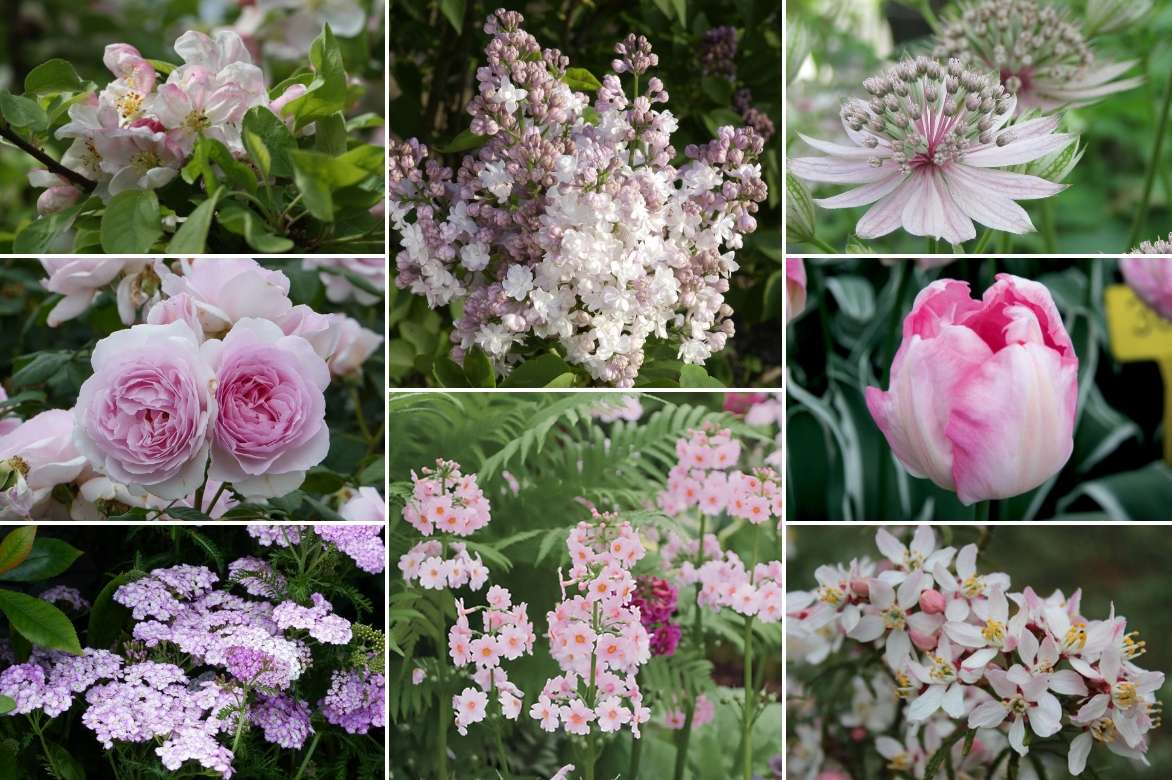
“Apple Blossom” association : Malus ‘Evereste’, English rose ‘The Ancient Mariner’, Achillea millefolium ‘Apple Blossom’, Syringa ‘Belle de Moscou’ (©Hortival Diffusion), Primula japonica ‘Apple Blossom’ (©Horticolor), Tulip ‘Triumph New Design’ and Choisya ‘Apple Blossom’
Within an orchard
Ornamental crabapples are excellent pollinators for cross fertilization of fruit apple trees. So why limit them to a purely ornamental role? They fit perfectly within an orchard. Their small apples will attract birds, which will then leave your “real” fruits alone and you can enjoy this surplus production to make delicious ciders or apple juices.
Useless anecdotes
- Ornamental apple trees tolerate repeated pruning and grow well when confined in a pot, especially dwarf varieties called ‘Pomzai‘. In addition, their flowering and the miniature size of their apples, impossible to reduce unlike the leaves, make them an ideal subject for creating an original bonsai.
- The name of the genus “Malus” comes from the Latin “Malum” which means “evil” in reference to “original sin” in the Bible. By contrast the name “pomme” comes from “pomum” which simply means… “fruit“.
- You can make very pretty Christmas decorations using twigs or small apples. Keep that in mind!
- Apple trees, whether ornamental or not, provide shelter and food for a colourful array of wildlife (birds, insects, …) but also for mosses and lichens that like to venture onto their fissured bark.
Recipes
Are you fed up with slipping on small fruits from your ornamental apple trees, fallen long before birds think of pecking at them? Why not pick them up to cook with instead?
Ornamental apple jellies
(here with pumpkin, it’s in season and gives a lovely colour)
- Simmer 1 kg of apples, 200 g of pumpkin, one vanilla pod, juice of one organic lime and its finely sliced zest in 1 L of water for 4 hours.
- Strain through a muslin cloth, weigh the juice obtained and add 50% of that weight in sugar.
- Add apple pectin by soaking a few pips in a tea infuser.
- Cook at a gentle boil until a spoonful of jelly sets on a cold plate.
- Put into jars previously washed and sterilised. Seal immediately.
- Enjoy on a good slice of goat’s cheese or country pâté, for example.
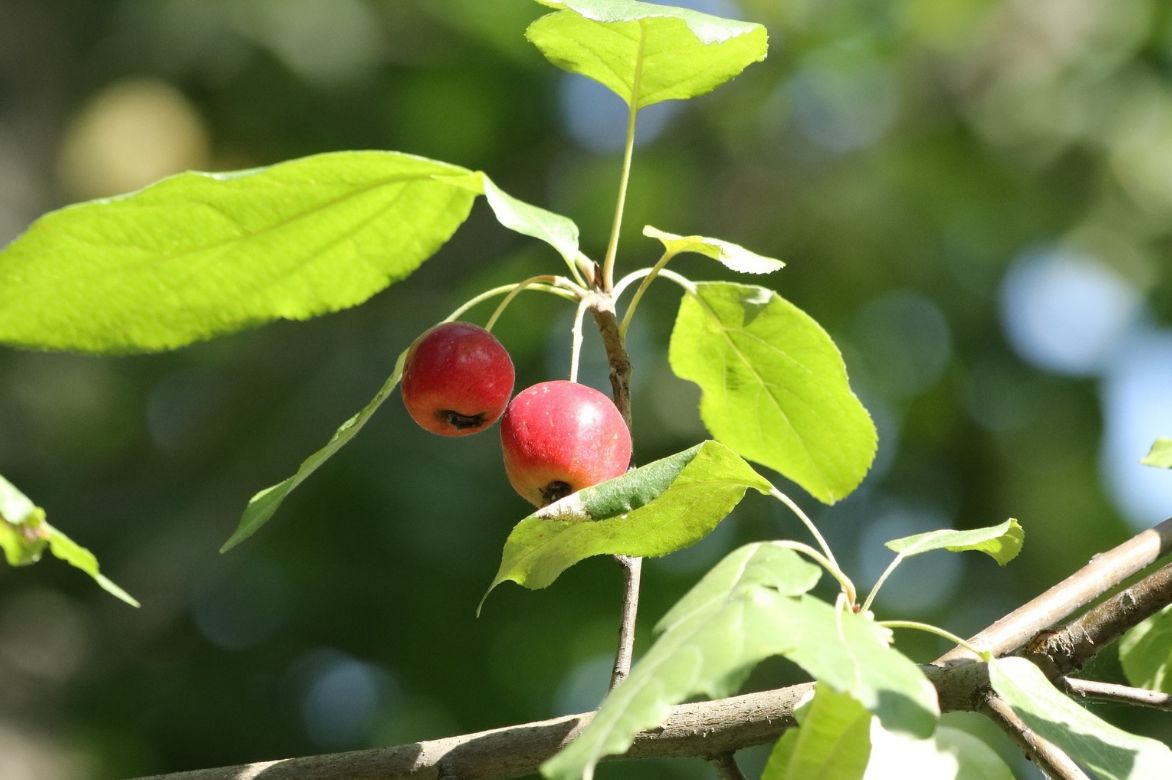
Ornamental apple liqueur
- Take a large jar (min 1.5 L), put in fruit brandy (1 L) or, better, dark rum, with 5 tablespoons of brown sugar, around thirty small apples quickly washed, 2 cinnamon sticks, 4 star anise, 4 cloves and 10 juniper berries.
- Mix everything and leave to macerate for a first month.
- Add another 5 tablespoons of brown sugar, mix well then leave to macerate for a further month. Keep the jar in a cool, dark place. The longer you let the preparation rest, the stronger the flavour and alcohol content will be.
- After two months, you can filter everything and bottle straight away. But the spirit will mature better if left with all its ingredients and enjoyed little by little… small glass by small glass.
Useful resources
Discover our selection of the best varieties of ornamental crabapples
Watch Olivier in the video Flowering crabapples, Malus: a delight for the eye and for birds
Frequently asked questions
-
My apple tree is flowering but not fruiting. What's happening?
Apple trees are not self-fertile. That means they need other apple trees of different varieties within a radius of 100 metres for what is called cross fertilization. If your apple tree is on its own, consider adding a companion of another species or variety. You should see good fruiting as early as the following season.
A second reason may be the weather. Apple trees flower in May. Nowadays, because of climate disruption, it is increasingly common to experience severe night frosts over several nights, especially north of the Loire. Such frost can cause irreversible damage to flowers and prevent fertilization (in any case, if flowers are frozen, pollinators will be too...). Some apple producers place heat cannons or braziers in orchards during "bad years".
-
My apple tree remains small. What's happening to it?
Your soil is probably too poor for it. Indeed, although ornamental apple trees are very hardy and undemanding, they still prefer rich soil. Give it some well-rotted compost at the very start of spring by lightly forking the soil at its base, and also consider applying a mulch around its base; ideally a good layer of dead leaves.
Alternatively, you may have planted it in a "flower pot" — that is to say, when planting your bush you did not remove the rootball and you dug a hole too small for the roots to have the space needed to develop. If you think this is the case, you can lift it and replant it properly in autumn or early spring, or at any time (outside heatwaves and frost) if you feel urgent action is required.
-
My ornamental apple tree is infested with aphids. What should I do?
Nothing. Unless your apple tree is really too young and you feel it will end up succumbing to the attack. Otherwise, a few aphids will make a good meal for ladybird larvae, which will be quick to keep their numbers in check. Hoverfly larvae are also especially fond of aphids. What’s more, hoverflies are highly effective pollinating flies (order Diptera) — flies that mimic bees or bumblebees depending on species — and, at a time when wild bees are disappearing at an alarming rate, these insects provide valuable supplementary pollination, notably for fruit trees. In other words, if you eliminate aphids, you won’t have hoverflies any more and, consequently, pollination may be less effective — so... fewer apples.
- Subscribe!
- Contents
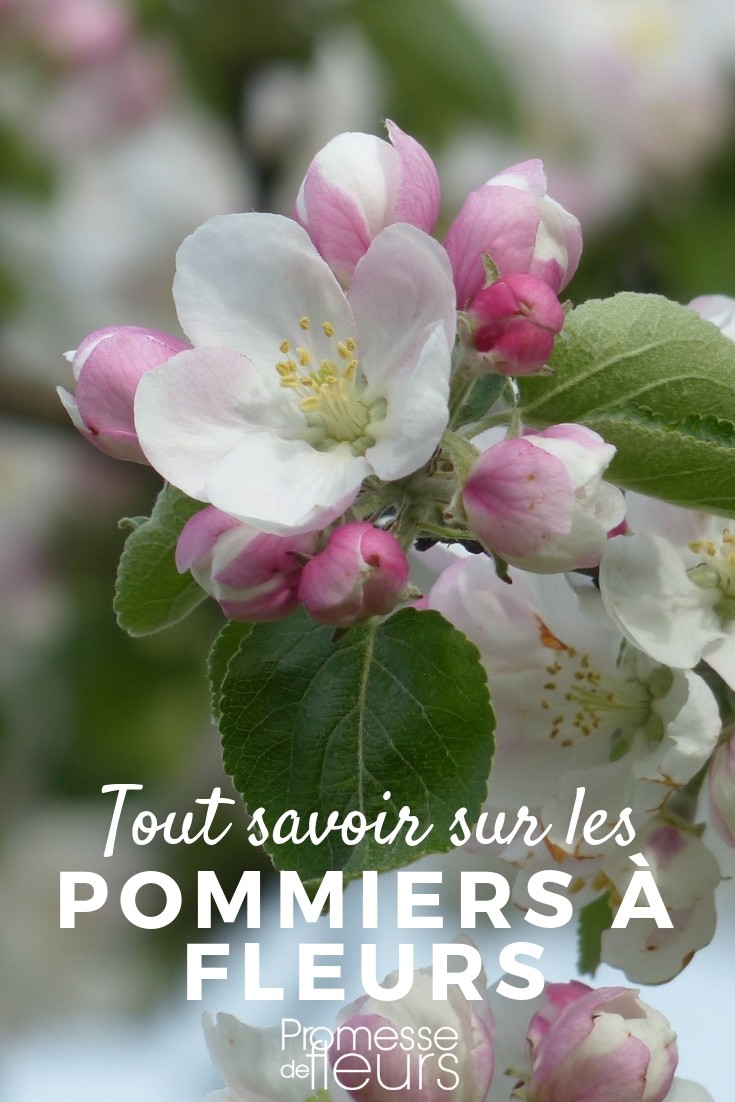

































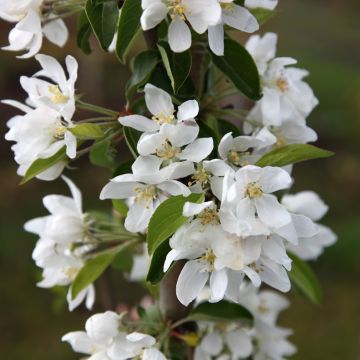

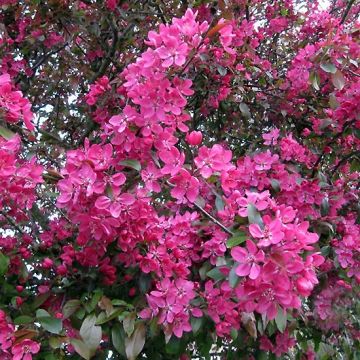





Comments